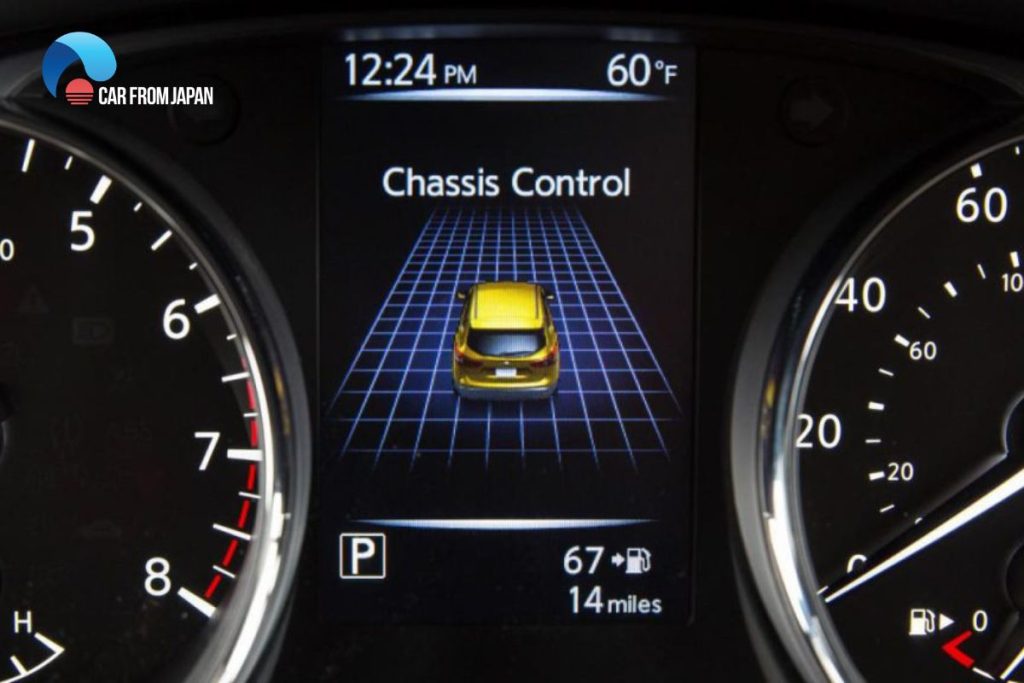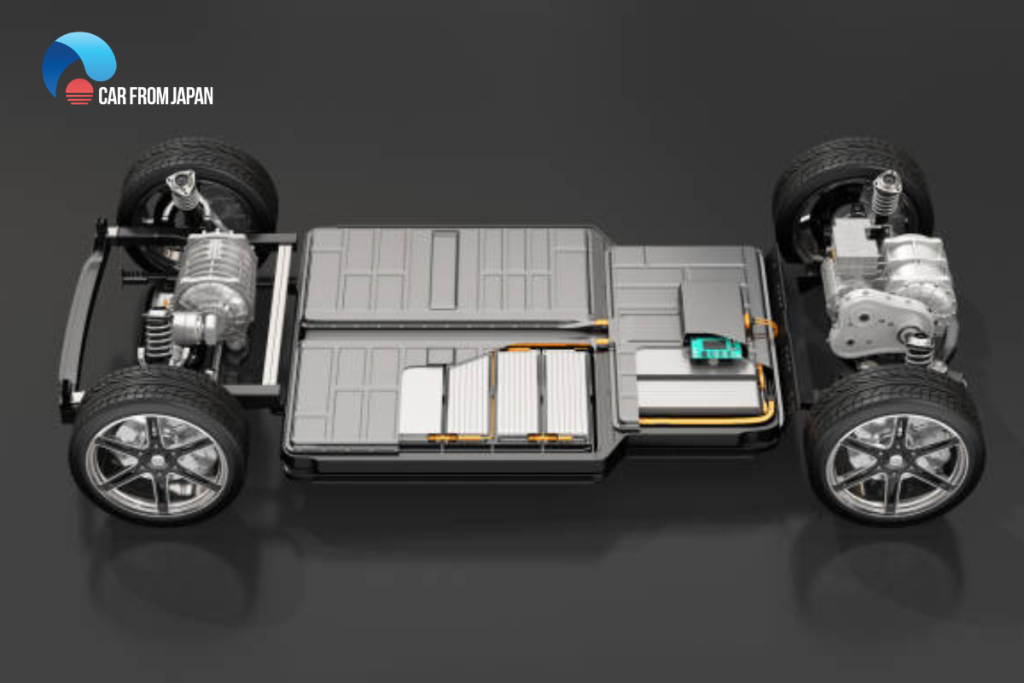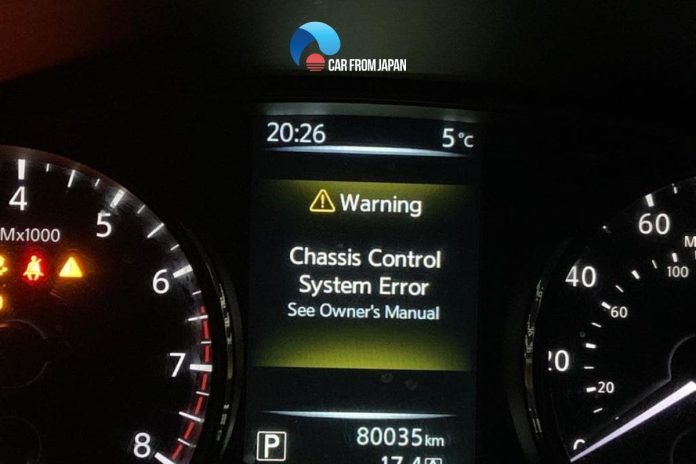If you have a Nissan Rogue, especially in some of the latest models, sometimes you will notice the notification “Chassis Control” illuminate on the information display.
The pop-up of this message on your car dashboard can make you worried. What does chassis control mean? And why is a chassis control system error on your car dashboard? Let’s find out:
Contents
What Does Chassis Control Mean?
One of the technologies that Nissan Rogue or X-Trail V-Series owners appreciate is the chassis control system. The chassis control system is the result of Nissan’s research to help the driver enjoy a smooth driving experience while providing maximum safety for passengers.
So what is a chassis control system? The chassis control is a necessary part of your vehicle as it collects data about wheel speed, acceleration, G-forces, etc, which do not allow too much pressure on your car, even in rough areas.
Thanks to advanced technologies, the chassis control system has a lot of developments. In the modern automotive industry, chassis control systems are being technologically developed to make driving and turning smooth. Generally, the active chassis control system includes 3 different technologies:
Active ride control
This system will automatically brake and adjust traction depending on road or terrain conditions to help the car drive smoothly through uneven roads.
The brake system will create a little impact force that does not slow down the vehicle but only allows the shock absorber to absorb the impact force faster, eliminating vibrations on the passengers.
At the same time, the sensors detect the change in wheel speed to change the engine torque, helping the vehicle maintain a stable speed.

Active engine brake
This is a safety feature that assists the driver when cornering or braking. This system will monitor the vehicle’s speed along with parameters from the steering and braking systems, thereby deciding whether to increase/decrease the engine braking level.
With this extra support, the driver will reduce the force on the brake pedal which helps to smooth driving and be safer.
Active trace control
This system gives the driver more confidence when cornering by controlling the braking force on each wheel by each driving condition, based on steering level, speed, and braking force acting on emergency turns, or when entering/separating lanes on highways.
Many drivers who own Nissan Rogue said that they are usually very confident when driving the Rogue at high speed, over 80 km/h; whenever cornering at high speed, the car turns very smoothly.
Combining these three technologies, the chassis control system gives the driver a confident driving feeling, and the passengers in the car are always comfortable and not tired during the trip. It is possible that just through these words, it is difficult to fully imagine the value of this system.
What Are The Reasons For A Chassis Control System Error?
Like any electronic system or any part of your vehicle, a chassis control system can sometimes go bad. So what are the reasons? We’ll elaborately discuss the cause behind the chassis control system error with the possible solutions for how to fix the chassis control system fault:
Loose battery connection
A loose car terminal will affect the current. When there’s less power going to the electrical systems, it will cause the car’s electrical parts and sensors, including the chassis control system, to not work properly or be faulty.
At that time, you will notice the warning light on your dashboard. If a loose battery connection is the culprit, you need to tighten the battery cable to solve this error. It’s not too hard for you to tighten the positive or negative cable of your battery connection, and it can be finished by drivers who know how to switch a wrench or screwdriver.
Normally, there will be a nut attached to the battery terminal, you just need to turn this nut to tighten the connection.
Dirty and dead battery
Over time, corrosion or dirt can build up on the car battery, or your battery can die. You will notice that your vehicle will have trouble when starting or problems with electrical parts, especially your chassis control system.
As a consequence, this system will lose its function and display the warning notification on the dashboard. To clean the car battery, you can apply a cleaning solution (baking soda) and rinse to get rid of the corrosion.
Note: Don’t forget to disconnect and reconnect the cables before and after cleaning your car battery.
For dead battery situations, there are some ways to revive your battery:
- A second battery, battery booster, or jumper cable may help you jumpstart your vehicle. Don’t shut the car engine off because your battery will not accept a charge at that moment.
- Using distilled water: When the electrolyte level is low, the addition of distilled water may be enough to completely flood the plates and allow a slightly wider reaction area. This may be enough to give the motor a few extra revs. In addition to using distilled water, you can use Epsom salt or Aspirin to revive the battery.
When your car battery dies, you won’t be able to start the engine, let alone get the chassis control system working properly. Usually, a dead car battery can be revived – at least temporarily – to keep you going.
However, in some situations, your battery can be revived, and replacing it is inevitable.

ABS sensor failure
The ABS sensors combine with the ABS module to keep your car stable during braking. ABS sensors or you can call wheel speed sensors because their function is to measure the wheel speed.
The rotation and the speed of the wheels are monitored by the ABS sensor. So if your ABS sensor fails to operate, it can’t provide data to the chassis; hence, an error can occur in your chassis control system. Try fixing the ABS sensor or replacing it to fix this issue.
Ground lead issue
The chassis control can’t operate functionally when the ground lead has some faults or shows an error sign.
The ground lead in your car is the connection from the minus battery terminal to the chassis of your car. This wire can be easy to overlook, but its function is very important – it is the foundation of the entire electrical system in your car. All current flowing in your vehicle passes through this battery’s ground cable.
If you have a bad ground lead in your car, you will experience all kinds of electrical problems, and the chassis control will show an error. These will not be just minor issues as they will affect your vehicle’s ability to operate. In this situation, find the faulty one and replace the defective ground lead with a fresh one.
Defective wiring harness
A wiring harness is a group of wires that transmit information and power.
It isn’t only a tube covered with some insulating material but also includes cables and wires that connect the various electrical and electronic parts of your car. It allows wires to run through it in an organized manner.
If the chassis fails to deliver commands to other components due to defective wires, your car won’t start. You need to find the defective wires and fix them.
FAQs
What does a Chassis Control System Error mean?
A CCS error indicates that one or more components within the system are malfunctioning or communicating improperly. This can affect the performance of various safety features and potentially compromise your vehicle’s handling.
Can I drive with a chassis control error?
Yes, you might be able to drive your car home or to a mechanic, but be careful! The car won’t handle the same way, so pay close attention to how it feels and be ready for anything unexpected.
How can I prevent Chassis Control System Errors?
Regular vehicle maintenance, including:
– Checking brake fluid levels
– Inspecting wiring harnesses for damage
– Addressing any warning lights promptly
Conclusion
The chassis control system is an outstanding feature of some Nissan models.
It can boost the driver’s confidence and improve the driving experience. Sometimes, you will see an error warning about this system on Infiniti or other makes, too.
While the exact cause can vary, common culprits include faulty sensors, wiring issues, a malfunctioning control module, low brake fluid, or even a weak battery. These problems can manifest in various ways, from ABS and ESC warning lights to reduced braking performance, traction control issues, and even steering problems.
If you’re not sure about the exact reasons, it will be safer when you take your car to the mechanic.



